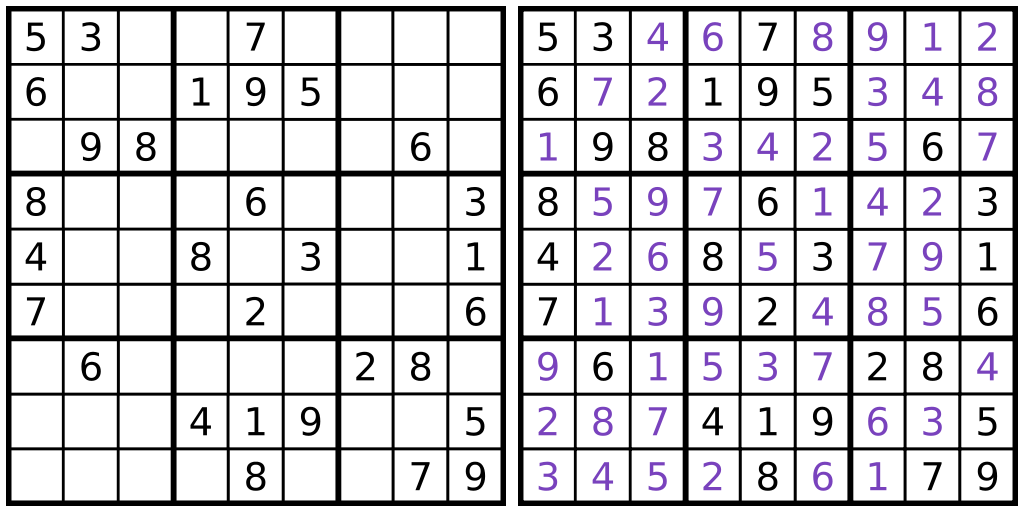
Sudoku is a popular puzzle game that originated in Japan. It has gained worldwide popularity and is often found in newspapers, puzzle books, and digital platforms. The objective of Sudoku is to fill a 9x9 grid with numbers from 1 to 9, ensuring that each row, each column, and each of the nine 3x3 subgrids (also known as boxes) contains all the numbers from 1 to 9 without any repetition.
The puzzle starts with some numbers, called "givens" or "clues," already filled in the grid. The player's task is to use logic, deduction, and elimination to fill in the remaining empty cells and complete the grid. The puzzle is solved when all cells are filled correctly, adhering to the rules of Sudoku.
Sudoku puzzles come in varying difficulty levels, from easy to very challenging. They require logical thinking, attention to detail, and a systematic approach to solving the puzzle. The game has a strong emphasis on pattern recognition and number placement strategies. Sudoku can be played using pen and paper, where players physically write numbers in the cells of a Sudoku grid. It is also widely available on digital platforms, including mobile apps, websites, and computer software, which provide convenient interfaces for inputting numbers and offer features like hints, timers, and multiple difficulty levels. The appeal of Sudoku lies in its combination of simplicity and complexity, making it a mentally stimulating and addictive puzzle game enjoyed by people of all ages.

Grid Structure: A Sudoku puzzle consists of a 9x9 grid, which is further divided into nine 3x3 subgrids or boxes. Some cells in the grid are already filled with numbers, and your task is to fill in the remaining empty cells.
Numbers: The numbers 1 to 9 are used to fill the grid. Each row, column, and box must contain all nine numbers exactly once.
Starting the Puzzle: A Sudoku puzzle usually starts with some numbers already filled in the grid. These are called "givens" or "clues." The givens are strategically placed to provide a starting point for solving the puzzle.
Solving the Puzzle:
Completion: The puzzle is considered solved when you've filled all the cells correctly, adhering to the rules of Sudoku—each row, column, and box contains all the numbers from 1 to 9 without any repetition.
The controls for playing Sudoku can vary depending on the platform or medium you are using. Here are some general control options:
Sudoku is a game that challenges your logical thinking, attention to detail, and problem-solving skills. With practice, you can improve your Sudoku-solving abilities and tackle puzzles of varying difficulty levels.
there are many other games developed under Rankdle, let's try them out